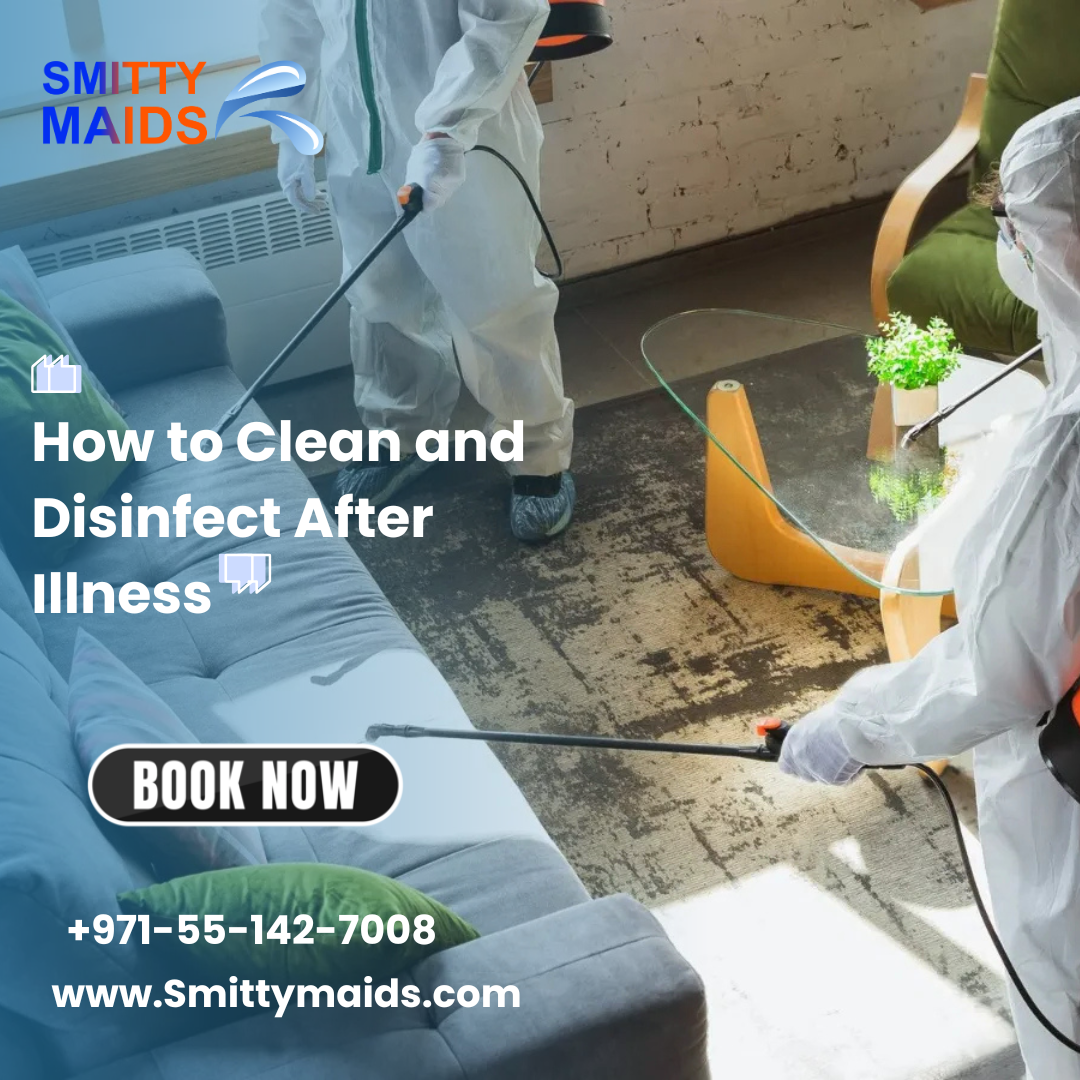When someone in your household falls ill, cleaning becomes more than just a routine task — it becomes a way to protect others from getting sick. Germs and viruses can linger on surfaces for hours or even days, depending on the pathogen. That’s why it’s important to clean and disinfect thoroughly after illness strikes. Here’s a step-by-step guide to help you do it properly and safely.
1. Wait Until the Person Has Recovered
Before doing a deep clean, wait until the sick individual is feeling better and no longer contagious — typically 24 hours after symptoms subside or as advised by a healthcare professional. Continue to clean high-touch areas daily during the illness.
2. Protect Yourself While Cleaning
Wear disposable gloves and, if possible, a mask — especially if you’re dealing with bodily fluids or contaminated laundry. Open windows for ventilation and wash your hands thoroughly after cleaning each area.
3. Clean First, Then Disinfect
Cleaning and disinfecting are not the same.
- Cleaning removes dirt and germs from surfaces using soap or detergent and water.
- Disinfecting kills germs using chemicals like bleach or EPA-registered disinfectants.
Always clean surfaces before applying disinfectants for maximum effectiveness.
4. Focus on High-Touch Surfaces
Disinfect areas that are frequently touched, such as:
- Doorknobs and handles
- Light switches
- Cleaning and disinfecting
- Faucets and sink handles
- Toilets and flush levers
- TV remotes, phones, tablets, and keyboards
- Refrigerator and microwave handles
- Bedside tables
Use a disinfectant approved to kill viruses like the flu, norovirus, or COVID-19. Let the product sit for the recommended contact time before wiping.
5. Handle Laundry With Care
- Wear gloves and avoid shaking laundry to prevent spreading germs through the air.
- Wash clothes, towels, and bedding in the warmest water recommended for the fabric.
- Dry items completely, as heat helps kill germs.
- Disinfect the laundry hamper or use a liner that can be washed.
6. Clean the Bathroom Thoroughly
The bathroom is a germ hotspot, especially if the person was vomiting or had diarrhea. Clean and disinfect:
- Toilet seats and handles
- Shower and tub surfaces
- Bathroom counters
- Toothbrush holders
- Any shared hygiene products (consider replacing them)
7. Disinfect Personal Items
Wipe down or sanitize items the sick person used frequently, including:
- Thermometers
- Phones and chargers
- Eyeglasses
- Regular Cleaning
- Mobility aids (e.g., walkers, canes)
8. Empty Trash Properly
Dispose of tissues, gloves, and other disposable items used by the sick person in a lined trash can. Use gloves when removing the bag and disinfect the bin afterward. Wash your hands immediately after.
9. Use Proper Disinfectants
Choose EPA-registered disinfectants labeled to kill viruses and bacteria. If you’re using a bleach solution, mix:
- 1/3 cup of bleach per gallon of water (or 4 tsp per quart),
and use it within 24 hours for best results.
Never mix bleach with ammonia or other cleaners.
10. Wash Your Hands Often
After cleaning each area, especially when handling laundry or trash, wash your hands with soap and water for at least 20 seconds. Hand hygiene is one of the most effective ways to stop the spread of illness.
Final Thoughts
Thorough cleaning and disinfection after illness help break the chain of infection and keep others safe. By following these steps, you ensure your home is not just visibly clean but truly sanitized. It’s a simple but powerful way to protect your family’s health and peace of mind.




